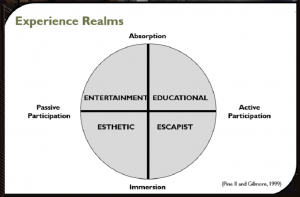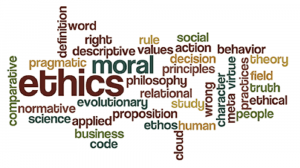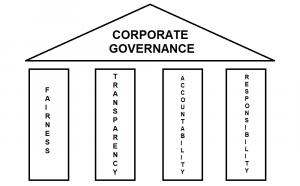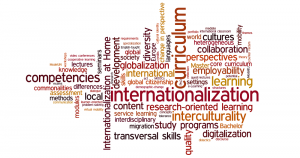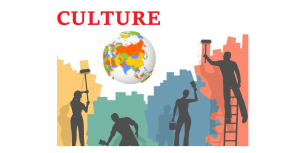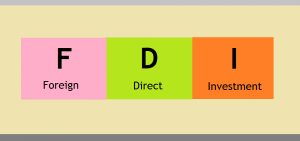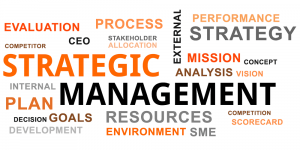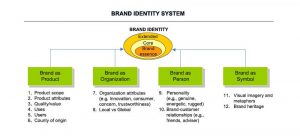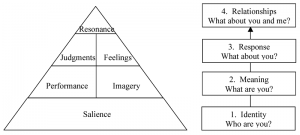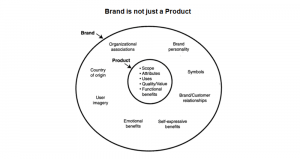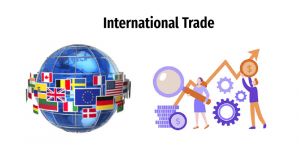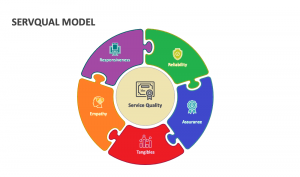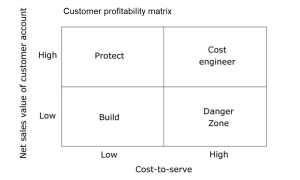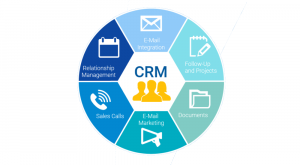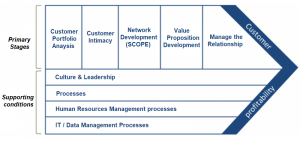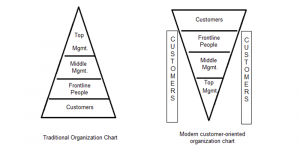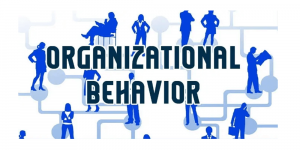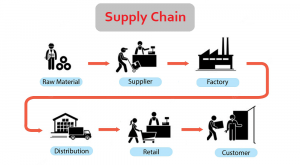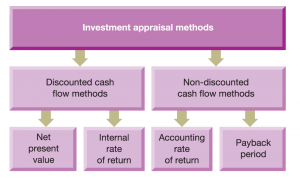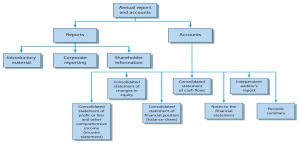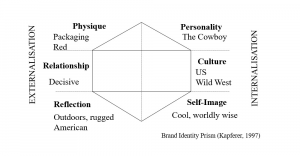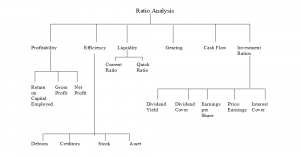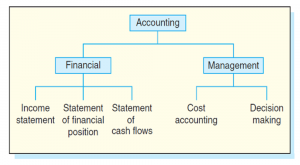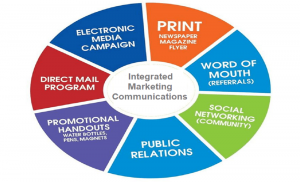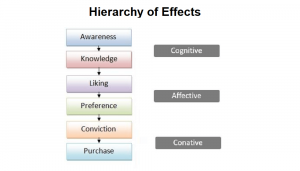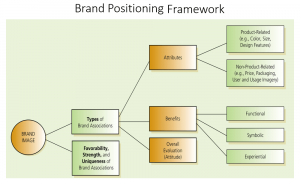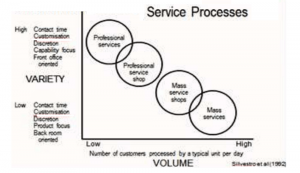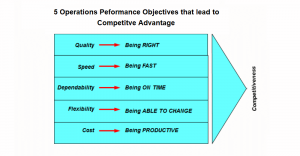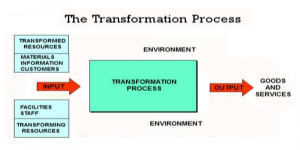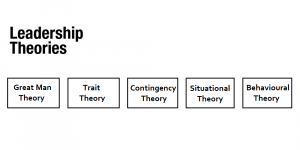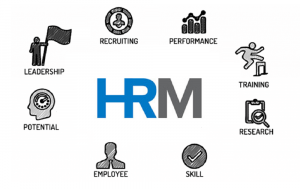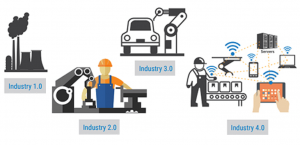The Experience Economy recognises the significant importance of experiences in shaping individuals’ perceptions making businesses create compelling experiences for their customers. In the previous service economy, companies simply wrapped experiences around their services to sell them better. However, there is now a paradigm shift where businesses are deliberately designing engaging experiences that command a ‘fee’. […]
Corporate Governance: Theories, Definition, Examples
Corporate governance is important to maintain the stability and integrity of companies as it promotes trust in the business environment. Studies suggest that there is a positive relationship between Corporate Governance and shareholders value. Investing is risky but information and warning signals need to be given with integrity, which was missing in the past financial […]
Agency Theory & Agency Problem Explained
Agency Theory is the framework that explains the relationship between business principal and their agents. and Agency Problem is a specific issue that can arise within that framework. What is the Agency Theory? Agency Theory is a framework that explains the relationship between business principals (who hires someone) and their agents (who acts on the […]
Board Diversity: Diversifying the board for better governance
A diverse board can promote transparency, ethical behavior, and responsible decision-making. The need for better corporate governance is causing an increasing interest in board diversity, and it is now an important issue for managers, directors and shareholders. As a result, more studies are being carried out within corporate governance to understand how board composition influences […]
Understanding Psychic Distance in Internationalization
Psychic Distance is an often discussed theme in internationalization of firms. Psychic Distance refers to the differences in the business environment between the nation of origin (of a firm) and the foreign market. This is considered a one of the factors that disturbs the flow of information between firm and the market. Greater the Psychic […]
Trompenaars and Hampden-Turner’s Seven Dimensions of Culture
Trompenaars and Hampden-Turner’s “Seven Dimensions of Culture” model offers useful insights for managing cross-cultural interactions in both professional and personal settings. It explains national cultural differences in organizations and ways to effectively manage these differences in a heterogeneous business environment. Seven Dimensions of Culture Trompenaars and Hampden-Turner (1998) introduced a set of cultural dimensions based […]
The Born global model of Internationalization
Some newer firms are not gradually approaching global markets but they are jumping directly into global markets. Such firms are termed ‘Born Globals’. The Born Global Model is a business strategy in which a company engages in international business right from its inception. This is a contradictory approach to most other traditional internationalization models, which […]
The Uppsala Internationalization Model
The Uppsala model of Foreign Direct Investment (FDI) is a theory that explains the internationalization process of firms. The model argues that firms invest in countries which are similar to their home countries. During the 1970’s a number of Swedish researchers at the university of Uppsala focused their interest on the internationalization process. They studied […]
Dunning’s Eclectic Paradigm (OLI Framework) Explained
The electric paradigm (OLI) remains the most dominant theory to explain the activities of Multinational Enterprises (MNEs). Developed by Dunning, the OLI model explains that the choice of market selection depends on three economic advantages known as ownership, location and internalization advantages. Eclectic Paradigm (OLI) The eclectic paradigm or the OLI framework (OLI stands for […]
Who is a Stakeholder? Definition and Examples
A stakeholder is anyone that has an interest in a business; these can be in the form of customers, employees, suppliers and community. Stakeholders include all those invested and involved in, or affected by, the company, such as employees, consumers, local communities, financiers, vendors, governmental agencies, and more. With corporate social responsibility (CSR) receiving a […]
Resource Dependence Theory Explained
Resource Dependence Theory (RDT) is a framework that suggests that firms are not self-sufficient entities but are instead reliant on various resources in their environment for survival. These resources include capital, raw materials, technology, expertise, etc. One can find the application of Resource Dependence Theory in organizational behavior and strategic management. This theory helps understand […]
Understanding Brand Identity and its elements
Learn about brand identity and strategies for building a strong brand identity. What is Brand Identity? Similar to how individuals have personalities which make them unique, brands also have identities which give them distinct characteristics. “A brand vision should attempt to go beyond functional benefits to consider organizational values; a higher purpose; brand personality; and […]
Aaker’s Brand Identity Planning Model
The Aaker model is a comprehensive guide on how to build brand identity. The model provides several ideas and paths for developing a brand identity and provides more charity to firms on what they should emphasize. Purpose of Aaker Model Compared to other similar model, the Aaker Model is more comprehensive as it provides strategists […]
Risk Diversification Theory of FDI
Risk diversification theory of FDI suggests that firms undertake FDI activities to diversify the risks by operating in multiple markets. The risks of foreign investments are known as transportation costs, trade barriers (tariffs and quotas), political and economic risks. Given these risks, the theory of diversification through FDI reduces the total risk of international investments. […]
Brand Extension Strategy Explained: Types and Examples
Learn about the concept of brand extension, including line and category extensions. Understand the advantages and disadvantages of brand extension, and the factors that contribute to successful brand extension. Brand Extensions What is Brand Extension? Brand Extension is a marketing strategy in which a successful brand name is used to launch new or modified products […]
What is Brand Equity?
Brand Equity is generally defined in terms of marketing effects uniquely attributable to a brand. Brand equity represents the total value that accrues to a product as a result of a company’s cumulative investments in the marketing of the brand. Brand equity can also be thought of as an asset representing the value created by […]
Brand and Brand Elements
A brand is much more than a name or a logo, and represents the full ‘personality’ of the company. Here we understand the concept of brand, its elements, and the advantages it offers. Importance of a Brand Businesses that invest in and sustain leading brands prosper whereas those that fail are left to fight for […]
Understanding a Multinational Corporation (MNC)
When discussing a Multinational Corporation (MNC), terms like Multinational Enterprise (MNE) and Transnational Corporation (TNC) are also commonly used. While they are all involved in international operations, there are some distinctions between these terms. An MNC is a firm that is involved in the production of goods or services in at least one country other […]
Stakeholder Theory Explained
The stakeholder theory, put forward by Edward Freeman, links to corporate social responsibility but the main difference is that it starts from the world’s perspective rather than starting from a business perspective. It takes into account benefits of stakeholders as well as economical responsibility of the business towards its shareholders. Stakeholder Theory A primary goal […]
Customer Loyalty Ladder: Importance, Strategies for Building Loyalty
The customer loyalty ladder is a hierarchical model that enables businesses to classify customers based on their relationship and level of engagement with the business. It is a valuable tool to understand and nurture customer relationships that helps businesses increase customer satisfaction and create long-term loyalty. Satisfaction and Loyalty Satisfied customers provide positive word of […]
SERVQUAL Model of Service Quality Explained
SERVQUAL is a widely used framework for assessing and measuring service quality in various industries and settings. SERVQUAL is based on the premise that customers’ perceptions of service quality are shaped by their expectations and the actual service they receive. Companies measure customer satisfaction as an indicator of service quality. This enables them to improve […]
Customer Profitability Analysis: CLV and other metrics explained
Not all customers are alike; they differ in their real profitability. Marketing is the art of attracting and keeping profitable customers. It involves making use of the 80– 20 rule, and in extreme cases see the most profitable 20 percent of customers may even contribute as much as 150 to 300 percent of profitability. A […]
Customer Acquisition & Retention Strategies
Customer acquisition and Customer retention strategies focus on attracting new customers through targeted marketing and sales efforts, and then focus on fostering loyalty, providing excellent service, and implementing personalized initiatives to keep existing customers satisfied, ultimately encouraging repeat business and long-term relationships. Customer Acquisition Companies increase their profits by spending considerable time and resources searching […]
Data Management for CRM: CDI best practices and strategies
Data management for Customer Relationship Management (CRM) involves the organized collection, storage, and utilization of customer-related information. It ensures accurate and timely access to customer details, enabling businesses to make informed decisions, personalize interactions, and optimize customer experiences. Managing customer interactions Managing customers and their interactions with the business is an important aspect of CRM, […]
eCRM: Benefits, Features, Components
eCRM (electronic way of customer relationship management) uses social media, forums, and other channels to track customer engagement with the business. For decades organizations did all the talking but Social Media allows two way dialogue and allows organizations to communicate with stakeholders. Customers can now easily post their thoughts about products, services, and policies. As […]
What is Relationship Marketing? Definition, Benefits and Examples.
Relationship marketing is a connection between equal partners, characterized by trust, commitment, communication, and sharing, which results in the mutual achievement of goals. It is basically interaction in networks of relationships. Relationships require at least two parties who are in contact with each other. The basic two-party relationship of marketing is that between a SUPPLIER […]
Customer Value Chain
Francis Buttle’s Customer Value Chain outlines the stages involved in creating customer value and building profitable customer relationships within the context of customer relationship management (CRM). Customer Value Chain provides a systematic means of displaying and categorizing value activities and margin. At each stage in the value chain, there is an opportunity to contribute positively […]
Customer Value and Customer Perceived Value (CPV)
Customer value is the customer’s evaluation of the difference between all the benefits and all the costs of a market offering relative to those of competing offers (Kotler et al. 2008). Image adapted from Kotler and Keller (2016). In traditional organization, the business model adopted was “top management” at the top and customers at the […]
Organizational Behaviour: Theories with Examples
Organization behaviour involves the study of people, teams and culture within an organization, how they interact and how it impacts the business operations. Good understanding of organizational behavior is important for organization success as it helps in decision making, effective management and leadership, and overall functioning of the organization. Organizational Behavior Theories Here are some […]
Success Factors for Customer Relationship Management (CRM)
Customer relationship management (CRM) is a strategy, used in combination with software system, to manage a firm’s interactions with existing as well as potential customers. CRM systems consolidate customer data from various channels and analyses it to understand more about the customers needs, behavior, and preferences. Here’s more on why capturing customer experience is key […]
Top Market Research reports and databases for data
Market Research reports, sources, and database (Mintel, MarketLine Advantage, PASSPORT) for consumer, country, industry, and financial data for every marketplace in the world. These are excellent resources to collect secondary data. Mintel Academic: Research Reports, Sources & Guides Mintel Academic: UK market research reports covering business finance, business technology, business healthcare, leisure, clothing and footwear […]
Supply Chain Management: Comprehensive Guide and Strategies
Learn the importance of effective Supply Chain Management (SCM) in today’s business world. Know more about the various SCM concepts, strategies, tools, and techniques. What is Supply Chain? A supply chain is basically a network between a company and its suppliers that helps it to produce and distribute products. The more efficient the supply chain, […]
Internal and External Sources of Finance: Building Blocks of Business Financing
Identify the key external and internal sources of finance, and learn to appraise the potential appropriateness of each of these sources of finance. The investment process involves obtaining funds, evaluating available investment opportunities and making a selection, structuring the terms of the investment, implementing the deal and monitor progress, achieving returns and exiting from the […]
Capital Investment Appraisal Methods
Understand the importance of capital investment planning and appraisal. Learn about the key investment appraisal techniques. Understand the importance of human behaviour issues in investment decision making. Businesses need to make investments and the nature of investment decisions is such that large amounts of resources are often involved and relatively long timescales are involved. It […]
Budgeting 101: How Firms Control Their Finances
Understand the purpose of budgets, learn to interpret information provided in budgets, and learn to critique the benefits and shortcomings of budgets. Why is Budgeting Important So what is the purpose of budgets? We all budget in our personal life, such as for holidays or making a bigger purchase. Businesses also do the same. A […]
What’s Inside an Annual Report and Why Does It Matter?
Understand the annual report and its key components and why they are more just numbers. Here’s your ultimate guide to company performance metrics. Learn to interpret and analyse the Income Statement and Statement of Financial Position. What is the Annual Report? The annual report is a comprehensive report that provides information on the financial performance […]
Kapferer Brand Identity Prism Explained
The Kapferer Brand Identity Prism is a branding tool commonly used by businesses to create a strong brand identity that resonates with its customers and sets itself apart from competitors. It provides a framework for visualizing the various elements that make up a brand’s identity. What is the Brand Identity Prism? In 1986, Jean-Noël Kapferer introduced […]
Understanding Financial Ratios: Definitions and Examples
Understand more about financial ratios and what they inform about the business. Learn to calculate and analyse some key financial ratios and draw overall conclusions about a business based on these ratios. “A set of accounts is like a book, which contains the story of a business…but like any good book there is a hidden […]
Cost Accounting 101: Understanding the Basics
Cost accounting involves summarizing and analyzing all the costs associated with the business activities. This practice also makes it easy to understanding the various costs associated with the business and how those costs impact the business and its profits. Learn more about cost accounting and why its needed in organisations. What is Cost Accounting? Management […]
Understanding Marcom: Its objectives & tools used to achieve them
MarCom (short for Marketing Communication) is the use of various methods to promote products or services to the target audience. MarCom has various objective and marketers can make of use of various tools to help achieve those objectives. Marcom Objectives The most common objectives of MarCom include building a positive relationship between the brand and […]
Hierarchy of Effects Theory Explained
The Hierarchy of Effects Theory is a model in marketing and advertising that describes the sequence of stages a consumer goes through when making a purchase decision. These stages include awareness, knowledge, liking or interest, preference, conviction, and purchase. The theory proposes that advertising and marketing efforts can guide consumers through these stages, leading them […]
Brand Positioning: Concepts
Brand positioning is about creating a suitable image for a brand in the minds of the target audience. As part of this process, the unique features of the brand are indetified and is communicated effectively to create a distict image of that brand to the target market. While brand positioning and positioning are part of […]
The Key Elements of Service Operations: A Comprehensive Guide
Service operations refer to the business and operational activities involved in actually delivering a product or service to a customer, including service design, service delivery, and service management. Learn more about the distinct concepts within the broader field of service management. Understand how firms manage service quality and optimize their service operations for maximum efficiency, […]
The Five Essential Performance Objectives of Operational Success
Performance objectives of operations are measurable goals that a company sets in order to ensure that its operational activities are carried out as efficiently and effectively as possible. Learn how organizations use strategic performance objectives to improve operations, optimize operational efficiency, maximizing profitability and to gain competitive advantages. What are the Performance Objectives of Operations […]
Understanding the Transformation Process in Operations Management
The transformation process refers to the series of activities that transform inputs into outputs and is a core concept in the study of operations management. This framework is commonly used in operations management to optimize the various processes and to streamline operations. Introduction The transformation process refers to the various activities that businesses undertake to […]
Principles of Management by Henri Fayol
French management theorist Henri Fayol developed the concept of the 14 Principles of Management that describe how managers should ideally organize work and manage employees in a business environment. Henri Fayol’s Contribution to Management Henri Fayol is credited with developing one of the earliest comprehensive management theories. His contribution to the field of management science […]
Global Leadership in Modern Times: An Intersection of Culture, Politics, and Economics
Find insights on effective global leadership. Understand leadership within the context of global organizations and the interdependent world. Understand the traits and characteristics of a Global Leader that promote cross-cultural collaboration. Need for Global Leaders The world today is highly interconnected and interdependent, and operations of businesses, organizations, and governments nowadays span countries and cultural […]
Blockbusters Case Study
A classic example of an organisation that failed to innovate and strategically adapt to both changes and pressures in the external environment (particularly technological changes) and its strategic positioning in a rapidly changing marketplace was Blockbuster. Blockbuster was a company that dominated the video rental market in the 1980’s and 90’s. From its start in […]
Breaking Down the Generational Divide: Understanding X, Y, Z and Beyond
A Guide to the various Generations, from Boomers to Gen Z and beyond. Understand the various generations of people, their differences and similarities, their unique experiences and perspectives. Learn about the various strategies to communicate and manage a multi-generational workplace. Understanding the Various Generations BabyBoomers: Born between 1945 and 1964, C suite jobs, settled and […]
Industry 4.0: A Comprehensive Guide to the Fourth Industrial Revolution
Industry 4.0 refers to adoption of cyber physical system like Internet of Things and Internet of system. 1st I.R- Used water and steam to mechanise production. 2nd I.R.- Used Electric Power to create mass production 3rd I.R- Used Electronics and I.T to automate. 4th I.R- Application of Information and Communication Technology ( Cyber Revolution, 4 […]
